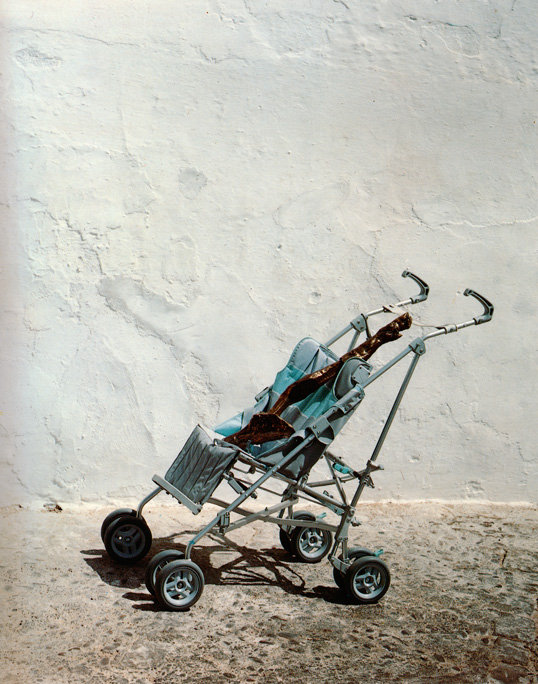The Irreverent Object
dal 5/11/2009 al 18/12/2009
Segnalato da
Arman
Joseph Beuys
Louise Bourgeois
Marcel Broodthaers
Lucio Fontana
Georg Herold
Martin Kippenberger
Jannis Kounellis
Piero Manzoni
Mario Merz
Reinhard Mucha
Giulio Paolini
Michelangelo Pistoletto
Gerhard Richter
Dieter Roth
Jean Tinguely
Rosemarie Trockel
Franz West
5/11/2009
The Irreverent Object
Luhring Augustine Gallery, New York
The exhibition examines the subversive nature of sculptural practice employed by European artists from the 1960s through the 1980s. These artists expanded the historically limited definition of the sculptural object through an elevation of non-traditional media. Work by: Arman, Joseph Beuys, Louise Bourgeois, Marcel Broodthaers, Lucio Fontana, Georg Herold, Martin Kippenberger, Jannis Kounellis, Piero Manzoni, Mario Merz, Reinhard Mucha, Giulio Paolini, Michelangelo Pistoletto, Gerhard Richter, Dieter Roth, Jean Tinguely, Rosemarie Trockel and Franz West.

Luhring Augustine is pleased to present The Irreverent Object, a group exhibition of European sculpture
from the 1960s, 1970s and 1980s. The exhibition includes work by Arman, Joseph Beuys, Louise
Bourgeois, Marcel Broodthaers, Lucio Fontana, Georg Herold, Martin Kippenberger, Jannis Kounellis,
Piero Manzoni, Mario Merz, Reinhard Mucha, Giulio Paolini, Michelangelo Pistoletto, Gerhard Richter,
Dieter Roth, Jean Tinguely, Rosemarie Trockel and Franz West.
The Irreverent Object examines the subversive nature of sculptural practice employed by European artists
from the 1960s through the 1980s. These artists expanded the historically limited definition of the
sculptural object through an elevation of non-traditional media and a rebellion against the accepted canon.
Unorthodox construction, diverse pairings and alternative materials blurred the conventional distinction
between aesthetic and utilitarian forms, opening the floodgates for limitless appropriation and giving rise
to a dynamic new formal vocabulary.
Referencing Marcel Duchamp’s infamous ready-mades, artists such as Marcel Broodthaers, Giulio
Paolini, Jean Tinguely and Joseph Beuys bucked tradition through the re-contextualization and display of
recognizable objects. Broodthaers’ wall piece, Moule, presents a dense group of empty mussel shells
affixed to board, and Paolini’s Intervallo (Torsi) divides the classical plaster cast of a figure which
emerges from opposing walls. Disparate mechanical parts appear functional in Tinguely’s ultimately
impractical floor and wall sculptures, and Joseph Beuys’ Fluxusobjekt is a grouping of intentionally
arbitrary elements such as a cardboard box, fat, oil, a rubber ring, and a child’s toy. By removing
ordinary items from their familiar context, these artists often use humorous presentation and language to
highlight the artistic potential that lies within the objects around us.
Other artists employed everyday items to address existential notions of mortality. Dieter Roth’s
Motorcycle Driver’s Misfortune reflects this somber perspective through the implied demise of the titular
character and the decaying composition of the organic materials that make up the work itself. Similarly,
Martin Kippenberger’s Baby Püppi uses dark humor to address issues of mortality and artistic legacy.
The absurd juxtaposition of a baby stroller and a bronze cast of a pig leg in place of a child elevates the
sculpture to an object of high art and, in a literal replacement of progeny, suggests that his artwork is his
lasting contribution to humanity.
Image: Martin Kippenberger, Baby Püppi, 1988, 2 parts: children's buggy, bronze cast - Overall measurements: 41 in h x 19.7 in d x 32.3 in l (104 cm h x 50 cm d x 82 cm l) © Estate Martin Kippenberger, Image courtesy of Galerie Gisela Capitain, Cologne and Luhring Augustine, New York.
For further information, please contact the gallery at (212) 206.9100 or kristen@luhringaugustine.com.
Luhring Augustine
531 West 24th Street, New York, NY 10011
Tuesday - Saturday, 10am - 6pm





